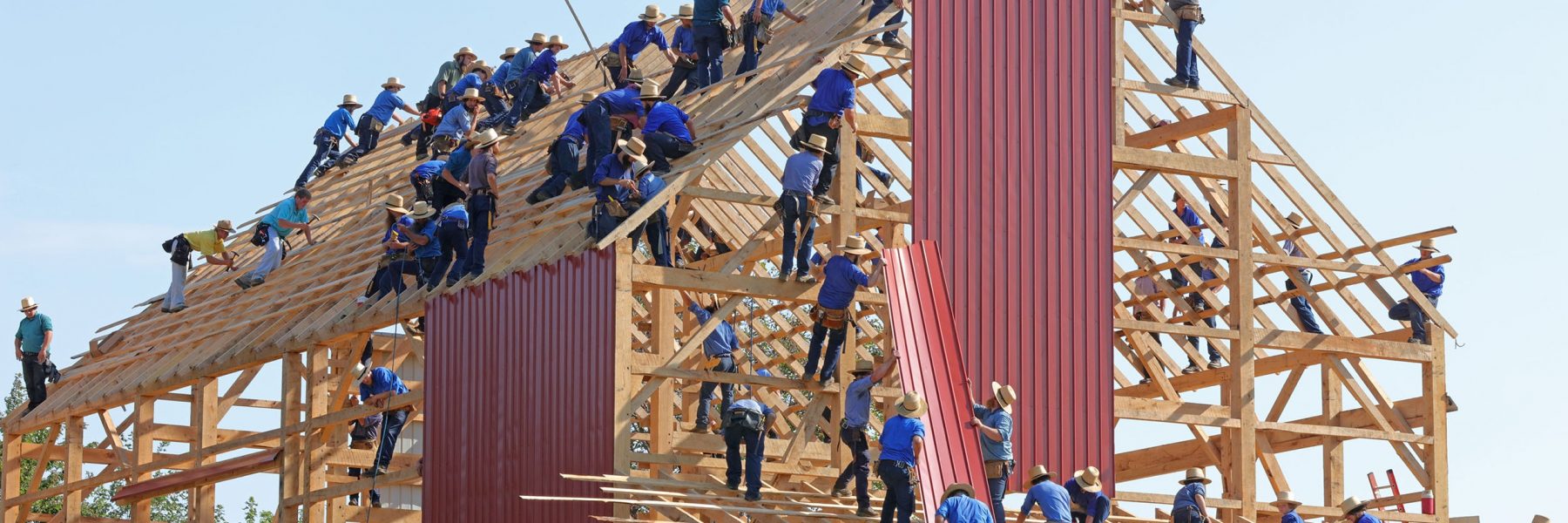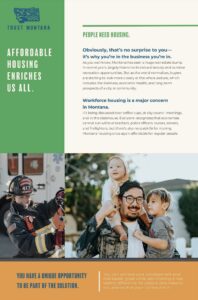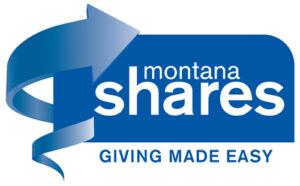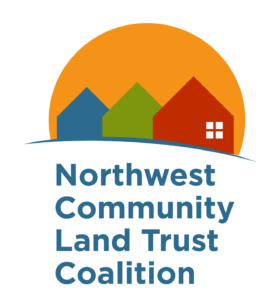In recent years, the Montana real estate market has priced out many hardworking, middle-class households who would normally be buying homes. Home prices now far exceed what working Montanans can afford to pay.
Even if a family gets a great deal on a new home, that benefit is rarely passed down to the next buyers of the home. This means new affordable homes need to be built constantly in order to meet the demand. This is where Trust Montana and other community land trusts around the state can help solve the housing crisis.
- A community land trust (CLT) is a non-profit organization that holds land for the benefit of communities in order to preserve the affordability of homes, farms, and other land-based assets.
- CLTs balance the interests of residents with the interests of the community by providing wealth-building opportunities for homeowners, ensuring retention of public resources, and providing long-term solutions to community needs.
- CLTs own the land beneath homes permanently, while the homes are owned by income qualified homeowners. This “shared equity” form of homeownership helps to make the home more affordable and preserves that affordability for the long-term, benefitting homeowner after homeowner.
- Trust Montana can partner with private builders by bringing grant funding to a project that is already underway. After the initial investment of grant funds, Trust Montana preserves the affordability of the home(s) for the long-term.
- Trust Montana provides the grant funding to subsidize a homeowner’s purchase at closing, filling the gap between the purchase price and what the buyer can afford. This means the builder does not have to lose any of their profit in order to partner with a CLT. After the first sale of the home, Trust Montana oversees each resale to ensure that home remains affordable from one buyer to the next.
- Due to Trust Montana’s involvement in a project, a home that was initially developed just like any other market rate home becomes permanently affordable. Once grant subsidy is invested into a home and placed in the CLT, the home can help approximately 7 families access homeownership over the next 50 years.
- Through Trust Montana’s ground lease resale formula, the benefit given to the first family will be shared with every family that lives in that house, forever.

Partner Roles
Developers bring:
- Project design expertise
- Permitting expertise
- Construction management
- Construction financing
- Community partnerships
The CLT Brings:
- Long-term affordability stewardship
- Funding to help income qualified people buy the homes
- Legal mechanism expertise to restrict the resale of the homes in perpetuity
- Education for homebuyers
- More community support for development projects due to the need for workforce housing across Montana
- Educational materials and support for realtors, lenders, appraisers, and title agents to ensure smooth transactions
Regulatory Incentives for Permanent Affordability
Some community housing policies provide benefits to developers when they include affordable homes in their projects:
- Density Bonuses: Allow more units of housing to be built on a site than would be allowed for under existing zoning regulations in exchange for a developer’s provision of affordably priced units or other public goals. The “bonus” can be achieved through an increase in floor area ratio, a greater building height, decreased minimum unit size, or loosened setback requirements.
- Montana example: Hebgen Lake: The rural area of Hebgen Lake near Yellowstone is exploring density bonuses as a tool to improve protections for both wildlife and land values. Some zoning strictly limits the density of new subdivisions in rural agricultural areas to as little as one house per square mile. The district maintains current densities, but eliminates minimum lot sizes in order to encourage clusters of residential units on less acreage. To further encourage clustering, density bonuses are granted to developers who protect sensitive lands. The concept is simple – the pattern of development is at least as important as the number of homes.
- Flexible Design Standards: reduce regulatory constraints, allowing for more flexible building designs.
- Montana Example: City of Missoula’s ADU policy.
- Reduced Parking Requirements: relax zoning requirements and allow for less required on-site parking, in return for the provision of more housing units
- Accelerated Approvals: move projects through key regulatory phases more quickly than usual. This can reduce both development costs and risks.
If these benefits and incentives are not included in your community’s code, Trust Montana may be able to provide educational information to your local planning office or community council.
Please contact Trust Montana for advocacy information and materials. You can reach our director, Dawn Conklin, at dawn@trustmontana.org
Trust Montana works statewide, but prioritizes working in areas where other CLTs are not already operating. Please contact the relevant community land trusts in the following areas if you would like to partner on permanent affordability projects in their jurisdictions:
- Big Sky Community Housing Trust (BSCHT)
Big Sky (in Gallatin County, MT) - Headwaters Community Housing Trust
Bozeman - North Missoula Community Development Corporation (NMCDC)
City of Missoula and Urban Fringe - Northwest Montana Community Land Trust (NWMTCLT)
Flathead, Lake, and Lincoln Counties - Southwest Montana Community Housing Trust
Southwest Montana





